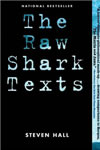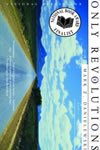University of Chicago Press, 2012
$25.00, ISBN: 978-0-226-32142-4
Review by Jessi Thomsen
Within How We Think: Digital Media and Contemporary Technogenesis, Hayles (2012) embodied the mission of Kairos: “exploring the intersections of rhetoric, technology, and pedagogy.” It entwined the tensions and possibilities of media, humanity, literature, cognition, attention, history, reading, and education. Hayles forged these connections by alternately delving into theoretical perspectives and analyzing concrete manifestations of abstract concepts. Additionally, How We Think performed its own argument, engaging the premises and processes proposed within the text.
| One | Two | Three | Four | Five | Six | Seven | Eight |
| First Interlude | Second Interlude | Third Interlude |
1: How We Think: Digital Media and Contemporary Technogenesis
Hayles began with a conceptual and historical foundation for How We Think, addressing the challenges, resistances, and potentialities of forging stronger connections between humans and technology, particularly in the traditional humanities and social sciences. She explored “the proposition that we think through, with, and alongside media” (p. 1). The theoretical, cultural, pedagogical, and physiological connections between humans and technology are threads that extend throughout the book. Hayles initiated the conversation by integrating technology into resistant fields of study and exploring technogenesis. A concept coming from evolutionary science, technogenesis describes the process by which a genetic change leads to a change of the environment (or technology), which, in turn, accelerates new genetic change (pp. 10-11). Whether we care to admit it or not, we are always already a part of technology, as it is a part of us; technology is inextricable from the evolutionary process. She explored technogenesis through a variety of objects and texts including telegraph code books, mapping technology, and multimodal literature. She drew conclusions from these analyses not to make claims for the ultimate benefit of connecting humans and technology, but rather to further the line of inquiry. As Hayles explained, “People—not technologies in themselves—will decide through action and inaction whether an intervention such as this will be successful” (p. 18).
Back to Chapter Menu
First Interlude: Practices and Processes in Digital Media
Digital technologies are changing the landscape of the humanities fields. As we move into an age when the humanities are hybridized with technology and science, and reading is accepted in all of its forms, a balance of print-based and digital readings becomes both difficult to achieve and at the same time exceedingly fruitful.
Back to Chapter Menu
2: The Digital Humanities: Engaging the Issues
The digital humanities have a unique challenge in being related and yet separate from the traditional humanities. Hayles argued that the digital humanities have “their own challenges and limitations,” and that it “is not that it is better (or worse) but rather that it is different, and the differences can leverage traditional assumptions so they become visible and hence available for rethinking and reconceptualizing” (pp. 23-24, emphasis in original). The digital humanities focus more on databases and collaboration than the traditional humanities; thus, the field excels at expanding the scale of the research, the scope of the projects, and the inclusion of a range of contributors. However, this also introduces a set of challenges including the context, storage, access, and dissemination of knowledge that digital researchers produce and synthesize. With this in mind, there are two possible routes for including the digital humanities among mainstream fields of study: assimilation and distinction (p. 46). Hayles suggested that we rethink this tension and consider it an asset in order to revitalize the humanities as a whole.
Back to Chapter Menu
3: How We Read: Close, Hyper, Machine
This chapter explores different ways of thinking by looking at three styles of reading. Close reading is synonymous with the traditional humanities and requires the focus and attention so highly prized by those disciplines. In contrast, contemporary readers are more adept at hyper reading, browsing web content, social media, and visual information at an astounding rate. This kind of reading, however, does not necessarily yield careful analysis. Finally, research often requires a phenomenal amount of data that cannot reasonably be reviewed by a single human being or even a collaborative group. Machine reading allows for the isolation and identification of patterns that would otherwise go unnoticed in the contexts of either hyper or close reading. Hayles recommended an inclusive and balanced approach to these reading techniques. Each has its strengths, but the reader must identify the best use and context for each reading style.
Back to Chapter Menu
Second Interlude: The Complexities of Contemporary Technogenesis
As Hayles explained, “contemporary technogenesis is about adaptation, the fit between organisms and their environments, recognizing that both sides of the engagement (humans and technologies) are undergoing coordinated transformations” (p. 81). This idea provides a framework for the previous and upcoming chapters, which develop the idea that humans and technology coevolve.
Back to Chapter Menu
4
: Tech-TOC: Complex Temporalities and Contemporary Technogenesis
Hayles's theoretical discussion began with the complex temporalities surrounding both technical and human beings; she engaged the question: “What would it mean to talk about an object’s experience of time, and what implications would flow from this view of objecthood?” (p. 86). The coevolutionary link between human and technical beings allows Hayles to discuss the developmental changes of technics. As a concrete example of this human-technic interface, Hayles analyzed the complex temporalities that exist for both humans and technology in Steve Tomasula’s (2009) TOC: A New-Media Novel. These temporalities are part of both the construction and the experience of TOC, which ultimately revealed that humans measure time but are also products of the same regulation (p. 115). The layered storylines and characters each added a slightly different perspective; TOC itself was constructed by a number of collaborators, each working from a different perspective at a different time. The intersection between technology and humanity in TOC created the conditions that allowed for their codependence, revealing new pathways for synthesizing an understanding of time and story as well as the related concepts spatiality and narrative.
Back to Chapter Menu
5: Technogenesis in Action: Telegraph Code Books and the Place of the Human
The coevolution of human and technical beings often has “the effect of reengineering environments so as to favor further changes” (p. 123). One such example is the telegraph code book, a device that is particularly useful because, decades after the height of its use, we can retrospectively view the changes the device initiated. Humans developed the telegraph, but in order to use it effectively, humans also had to adapt to the technology. Ultimately, Hayles asserted, the telegraphs and code books are precursors to modern computer code (p. 146); ironically, the modern computer provides the means to research and understand its ancestor (p. 158).
Back to Chapter Menu
Third Interlude: Narrative and Database: Digital Media as Forms
Databases are changing the way humans approach research practices. These mines of information allow researchers to investigate new possibilities in the crossover between database and narrative. Hayles introduced “spatial history” and “narrative” history (p. 171), highlighting two experimental texts for further analysis: Steven Hall’s (2007) The Raw Shark Texts: A Novel and Mark Z. Danielewski’s (2006) Only Revolutions: A Novel. Each of these texts bridges the gap between narrative and database. In addition, Only Revolutions lends itself to a machine reading.
Back to Chapter Menu
6: Narrative and Database: Spatial History and the Limits of Symbiosis
According to Hayles, narrative is inherently temporal while database is inherently spatial; however, these frameworks have a symbiotic relationship, or entwinement (p. 181). Spatial history exemplifies this overlap, making maps represent meaning and movement rather than only location. These combinations allow for representations of more complex information; narratives and databases embody a tension between standardization and story.
Back to Chapter Menu
7: Transcendent Data and Transmedia Narrative: Steven Hall’s (2007) The Raw Shark Texts
Hayles analyzed the synthesis of narrative and database in Steven Hall’s (2007) The Raw Shark Texts in terms of (de)contextualization of data, presence or absence of a speaker, and flexibility of format (p. 202). The Raw Shark Texts magnified and interrogated these binaries through concrete villains in the narrative. Mycroft Ward “represent[ed] the complete separation of form and content” whereas the Ludovician shark “embodie[d] the complete fusion of form and content” (p. 205). These villains propelled the reader into an immersive fiction that can be viewed as both positive (the goal of narrative) and negative (dangerous to the reader). Finally, The Raw Shark Texts included inversions: un-chapters (or negatives) and an undex, which also forced the reader to choose between parallel endings. The Raw Shark Texts mediated between narrative and database, hinting at the potential “for a future in which humans, as ancient as their biology and as contemporary as their technology, can find a home” (p. 219).
Back to Chapter Menu
8: Mapping Time, Charting Data: The Spatial Aesthetic of Mark Z. Danielewski’s Only Revolutions
Mark Z. Danielewski’s (2006) Only Revolutions explored a transformational “shift from narrative as a temporal trajectory to a topographic plane upon which a wide variety of interactions and permutations are staged” (p. 221). Only Revolutions can be read in “octets” (p. 224), by rotating the book every eight pages in order to read text that is initially upside down; in addition, there are “prohibitions on words and concepts,” rotating lists of data, “chronological lists of entries,” permutations of terms throughout the text, and specific word and line counts (pp. 224-226). The additional thread of historical events that runs along the center of each page also complicates the narrative and lends itself to data analysis as it both forms and informs content. These patterns “emerge from an ocean of data” and provoke active participation as the reader engages text and memory simultaneously (p. 230). These limitations and structures ideally situate Only Revolutions for a machine reading, which is described in the coda. It is the ultimate synthesis of print and digital. Hayles's argument circled back to its beginning, an insistence that the humanities do not have to choose between grasping print-based past or digitized future; rather than focus on either/or, inquiry into humanity and technology should delve into the complexities of both/and.
Back to Chapter Menu
I was initially baffled by the notion that I was reading about the coevolution of humanity and technology in a print, paperbound book. However, N. Katherine Hayles created a multidimensional text by bridging the gap between print and digital. She provided How We Think: A Digital Companion so readers have access to the same data used to craft the print-based text. This resource includes interviews from Hayles’s digital humanities research, telegraph code books, and supplemental materials to Only Revolutions. Readers then have the option to test Hayles’s hypotheses and conclusions or synthesize the data in a new way.
N. Katherine Hayles’s How We Think disrupted the popular notion that there is a technological split between generations or between fields of study. She thoroughly supported her argument for technogenesis, providing concrete examples of the coevolution of humans and technics. Whether or not we are prepared to welcome this intersection into our lives and work, it is, she argued, already present and inextricable. The text's theoretical background and careful synthesis of research provides a platform for understanding this connection, especially for readers who already feel confident using and thinking about technology. For readers who feel more aligned with print-based texts and traditional fields of study, the concrete examples may be accessible, but the depth of analysis and bombardment of data may feel overwhelming. However, despite the swirling maelstrom of technology, evolution, and human potentialities in How We Think, I always seemed to surface with Hayles as my guide.